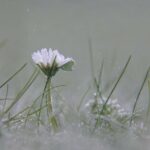When Do Daffodils Bloom: Unveiling the Enchanting Blooming Patterns

As nature awakens from its winter slumber, one of the eagerly awaited sights in the world of flora is the vibrant arrival of daffodil blooms. The enchanting beauty of these delicate flowers has captivated gardeners and nature lovers for centuries. But when exactly do daffodils begin their show-stopping display? In this article, we delve into the intriguing world of daffodils’ blooming patterns, unraveling the secrets behind their timing and shedding light on the factors that influence their breathtaking emergence. With the guidance of a seasoned horticulturist and their in-depth knowledge of daffodils, we invite you to discover the mesmerizing world of these enchanting flowers. Get ready to dive into a universe where beauty and science collide, as we uncover the mysteries surrounding the blooming of daffodils.
When Do Daffodils Bloom?
Daffodils, with their vibrant colors and delicate petals, are a sight to behold during the spring season. If you have ever wondered, “When do daffodils bloom?” then you’ve come to the right place. As a seasoned horticulturist specializing in blooming patterns, I am here to unveil the enchanting blooming patterns of daffodils and guide you through their unique flowering behaviors.
Understanding the Timing and Factors Influencing Bloom
Daffodils typically bloom in early spring, adding a burst of color to the landscape. Their peak blooming period occurs between March and April in most regions. However, it’s crucial to note that the exact timing of their bloom can vary depending on local climate conditions, elevation, and the specific daffodil variety.
As winter recedes, daffodils start to make their presence known with their charming blooms. They continue to flower until the first few weeks of spring, filling gardens and parks with their radiant hues. Being one of the first flowers to bloom in spring, daffodils can turn even the dreariest landscapes into vibrant displays of beauty.
The Cycles of Renewal
Daffodils are perennial bulbs, meaning they will bloom year after year with proper care. To enjoy their captivating blossoms, it is best to plant daffodil bulbs in late fall or early winter, about a month after the last frost. This timing allows the bulbs to establish themselves during the cold months, ensuring a dazzling display of blooms when spring arrives.
Just like nature’s own enchanting dance, daffodils require a chilling period during winter before they bloom. This hibernation-like stage strengthens and prepares the bulbs for their glorious emergence when the time is right. It is during this period of anticipation that the daffodils gather energy and store it within their bulbs, ready to unleash their beauty as soon as the conditions align.
Unraveling the Colors of Spring
Daffodils come in various colors, offering a wide spectrum of choices for any garden or landscape. From the classic, sunny yellow to the delicate cream, pristine white, sophisticated pink, and even vibrant orange, these flowers provide endless possibilities for creating captivating displays. Each color brings its own unique charm, adding depth and character to the spring scenery.
Caring for Daffodils: Nurturing Nature’s Masterpiece
To ensure that your daffodils continue to bloom and thrive, it’s important to provide them with the care they deserve. Adding a low nitrogen fertilizer that is high in potassium can help nourish the bulbs and enhance their flowering potential. This action provides the daffodils with the essential nutrients needed to produce robust blooms and maintain their health.
Remember to give your daffodils a proper home by selecting a suitable location that receives ample sunlight and has well-drained soil. These resilient flowers appreciate a consistent watering routine and benefit from occasional mulching to retain moisture and inhibit weed growth. Incorporating these practices into your gardening routine will reward you with a stunning yearly showcase of daffodil blooms.
In conclusion, the blooming patterns of daffodils are a wonderful convergence of timing, nature’s cycles, and proper care. By understanding their unique behaviors, you can transform your garden or landscape into a mesmerizing haven of spring colors. So, when do daffodils bloom? Their enchanting display begins in early spring, contributing to the magical awakening of nature after winter’s slumber.
“With their vibrant petals and captivating colors, daffodils herald the arrival of spring with a burst of beauty that is hard to ignore.”
Did you know that daffodils are not only beautiful flowers, but they also have some interesting facts associated with them? If you’re curious to learn more, check out these fun facts about daffodils. Who knew that these cheerful blooms could have such fascinating stories behind them? Click here to uncover some delightful secrets about daffodils: fun facts about daffodils.
Caring for Daffodils: A Guide to Pre- and Post-Flowering Care 💛
[youtube v=”QGlNW2vjiP0″]
Pre-Flowering Care: Setting the Stage for Blooming
Daffodils, those cheerful heralds of spring, typically bloom between March and April. However, the exact timing can vary depending on factors such as climate conditions, elevation, and the specific daffodil variety. These perennial bulbs require a chilling period during winter before they burst into vibrant bloom. To ensure a dazzling display of blossoms in the spring, it’s essential to plant daffodil bulbs in late fall or early winter.
Selecting the right location for your daffodils is crucial. They thrive in areas that receive ample sunlight and have well-drained soil. When it comes to soil type, daffodils are not overly demanding—they can adapt to various soil conditions. Just make sure to avoid waterlogged soil, as it can lead to bulb rot.
Taking care of daffodils while they are growing and flowering is essential to their overall health. One key aspect is providing them with regular watering. Daffodils need enough moisture during this stage to support their growth. However, be cautious not to overwater, as excessive moisture can also cause bulb rot.
Applying a low nitrogen fertilizer is another important step in daffodil care. This provides the bulbs with the necessary nutrients to thrive and produce vibrant blooms. Follow the fertilizer packaging instructions to ensure proper application.
Lastly, consider mulching around your daffodils to help maintain soil moisture levels, suppress weed growth, and provide added insulation during temperature fluctuations.
“Daffodils require a chilling period during winter before they bloom. Select a suitable location with ample sunlight and well-drained soil. Regular watering, low nitrogen fertilizers, and mulching contribute to the overall health of your daffodils.”
Post-Flowering Care: Ensuring Their Long-Term Vitality
Once your daffodils have finished blooming, it’s time to shift your care approach. Although the blooms may fade, the leaves remain important for the plant’s well-being. Resist the temptation to cut back the foliage immediately after flowering. Instead, allow the leaves to continue photosynthesizing and storing energy for the next season. This process ensures the daffodils’ reproductive cycle and ensures their long-term vitality.
While the leaves are still green, maintain a watering regimen to sustain their health. Adequate water intake assists in nourishing the bulbs and helps prepare them for dormancy later in the year.
Eventually, the leaves will wither and turn brown. At this stage, you can remove them. This signals that the daffodils have completed their growth cycle for the year and are entering a dormant period. Allow them to rest undisturbed until the next growing season.
“After daffodils finish blooming, leave the foliage intact to allow for photosynthesis and energy storage. Adequate watering during this stage supports the bulbs’ nourishment before they enter dormancy.”
A Lasting Impression: The Beauty of Daffodil Blooms
Daffodils come in an array of colors, including traditional yellow, cream, white, pink, and even orange. Their vibrant hues contribute to the magical awakening of nature after winter’s slumber, infusing gardens with warmth and cheer.
By providing proper care to your daffodils from pre-flowering to post-flowering stages, you can ensure their ongoing health and longevity. Remember to select a suitable location with ample sunlight and well-drained soil, provide regular watering and low nitrogen fertilizer, and allow the foliage to complete its natural cycle of photosynthesis. With these considerations in mind, your daffodils will continue to delight you year after year with their cheerful blooms, marking the arrival of spring in all its splendor.
“By implementing proper care techniques and considering key factors such as location, sunlight, soil conditions, regular watering, and fertilizer application, you can enjoy the vibrant beauty of daffodils year after year.”

FAQ
Q: What is the blooming period for daffodils?
A: Daffodils typically bloom in early spring, with their peak blooming period occurring between March and April in most regions. However, the exact timing can vary depending on local climate conditions, elevation, and the specific daffodil variety.
Q: When do daffodils begin to flower?
A: Daffodils begin to flower as winter recedes and will continue to do so until the first few weeks of spring. They are one of the first flowers to bloom in spring and are often the brightest spots of color in the landscape after winter.
Q: How often do daffodils bloom?
A: Daffodils are perennial bulbs and will bloom year after year. They are reliable spring-flowering plants that multiply quickly and return to bloom each year.
Q: When is the best time to plant daffodils?
A: Daffodils are best planted in late fall or early winter for a spring bloom that occurs about a month after the last frost. This timing allows the bulbs to establish roots before the arrival of cold temperatures.
Q: How can I care for daffodils to ensure blooming?
A: To care for daffodils, it is recommended to add a low nitrogen fertilizer that is high in potassium. Additionally, providing well-drained soil, regular watering during the growing season, and avoiding excessive moisture during dormancy can help promote healthy bloom cycles.
- Mastering Leader in Spanish: The Complete Guide - April 19, 2025
- Uncovering Surprising Parallels: England Size Compared to US States - April 19, 2025
- Old Mexico Map: Border Shifts 1821-1857 - April 19, 2025
















